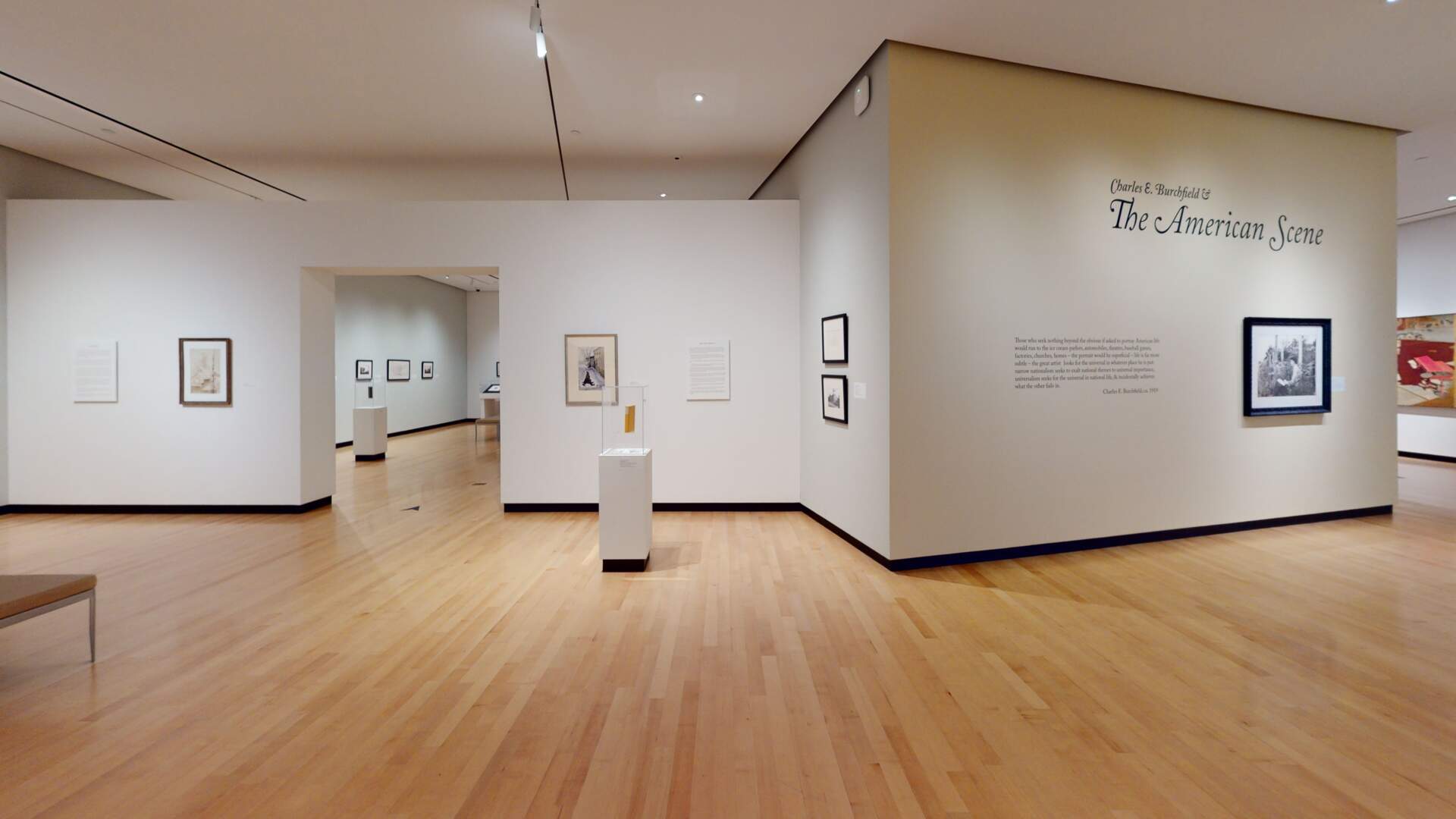
Charles E. Burchfield & The American Sceneexhibition installation, 2020-2021; Courtesy of the Burchfield Penney Art Center
Charles E. Burchfield & the American Scene
Past
Dec 11, 2020 - May 30, 2021
This exhibition examines the period between 1918 and 1935, when Charles E. Burchfield was seen as a painter of what has come to be called the American Scene. Art movements are never clearly defined, even after the fact, and that is certainly true of the American Scene. The modern moment in American art and literature took many forms and launched a number of movements, but the American Scene was perhaps the most homegrown. It was focused on the local experience of those outside America’s cultural centers, far from New York, and the bustling cities of the day. A critical take on America was needed. It was time for the nation to look in the mirror.
In the early 20th century the world was in the grips of a major pandemic that took the lives of more than 675,000 people in the United States between 1918-1920, U.S. women were fighting for the right to vote, culminating in the ratification of the 19th Amendment to the U.S. Constitution, and the bustling Greenwood District in Tulsa, Oklahoma known as Black Wall Street was burned by racist mobs, with dozens of people losing their lives and hundreds injured. At the same time irresponsible farming practices in the Great Plains created the conditions that led to devastating dust storms a decade later. The more than one million acres that were effected became collectively know as The Dust Bowl.
One hundred years later, the Covid-19 virus threatens the world again, with more than 300,000 dead in the U.S. by the end of 2020. Protests sparked by the death of George Floyd have energized the Black Lives Matter movement for racial justice, the #MeToo movement continues the fight against sexual violence and harassment against women, and the pervasive causes of climate change continue to go unchecked. The world has changed in many ways over the last century, but many of the problems we faced then still persist.
The American Scene movement got its name from a book published by the writer Henry James in 1907. The American Scene was written after James returned from an expatriate life living in Europe. His reflections on what he saw in his native country offered the American public a critical view of itself that had, until then, very rarely been stated. In 1921 Carl Van Doren's “The Revolt from the Village: 1920" was published in The Nation. This essay was an excerpt from his book, Contemporary American Novelists(1900-1920) which was later expanded into a larger volume titled The American Novel, 1789-1939. In this book, Van Doren describes the influence of James on the writer Will Cather, whose My Antonia from 1918 was an important influence on Burchfield. The chapter that follows, "Revolt from the Village," describes the importance of the novels of Sherwood Anderson and Zona Gale, whose stories painted a critical portrait of town and village life. Their novels—along with what Van Doren refers to as “Sinclair Lewis’s epoch-marking Main Street”—were seen as prime examples of the American Scene in literature, and all were important influences on Burchfield during the period. In a biographical note written later in life, Burchfield wrote of the year 1920:
In the fall I fell under the charm of the realistic American Scene writers of that era —Willa [Cather’s] “My Antonia” [Sinclair Lewis’s] “Main St.” Zona Gale’s “Lulu Bett” etc. — I turned, once again to human subjects, now with a different outlook – No bitterness, no social comment, I wanted the buildings for their picturesque quality & historical interest – False fronts fascinated me, as being a peculiarly American invention.
During this same decade Burchfield enjoyed a close relationship with artists J.J. Lankes (1884-1960) and William Schwanekamp (1893-1970). They corresponded frequently, and also traveled together on sketching trips. In August of 1923 the three men drove in a Ford Model T to southeastern Ohio to sketch. While traveling together they photographed many of the locations where Burchfield had previously painted, many of which no longer exist today. Several of these photographs are included here.
This exhibition would not be possible without the recent generous donations of photographs and archival material from Peggy Richter Haug and David Richter. The material they have provided relating to the life and art of Charles Burchfield is a treasure that we will continue to learn from for some time. The exhibition is presented by the Charles E. Burchfield Foundation, with support from The Baird Foundation, Mrs. John Kociela, Phillips Lytle LLP, Premier Wine & Spirits and Paula and John Reinhold & The Joy Family Foundation.
Explore a self-guided virtual tour of the exhibition here.